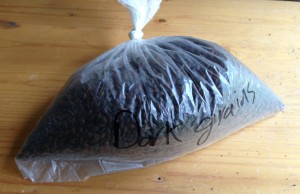This is the third article in this series on Russian imperial stouts.
Russian imperial stouts are big, dark beers. They are among the most intensely flavored beers brewed. When it comes to their grain bill, the Beer Judge Certification Program (BJCP) has this to say. “May have a complex grain bill using virtually any variety of malt.” Let’s see if we can narrow that down a bit, starting with the dark grains.
Dark Grains
Russian imperial stouts may be dark brown to black, and the color of their foam may vary from off-white to reddish brown. They frequently have intensely roasted aromas and plenty of roast flavor and bitterness. As such, the dark grains play a central role in the character of this beer. The most common dark grains found in a Russian imperial stout are black malt, roasted barley, and chocolate malt, but there are other choices worth exploring.



Recent Comments